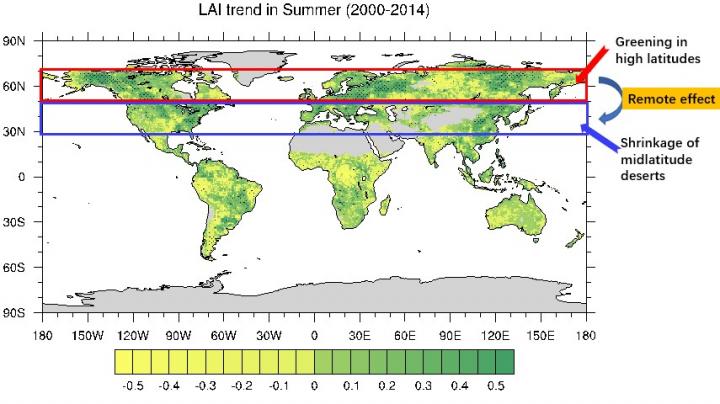

Schematic diagram of the remote effect of high-latitude greening on midlatitude deserts.
Credit: Yongli He
Interestingly, besides inducing a stronger greenhouse effect, increasing carbon dioxide is also leading to global vegetation greening, especially in high latitudes, by the fertilization effect.
However, it is still unknown whether greening in high latitudes could affect midlatitude deserts.
In a paper recently published in Atmospheric and Oceanic Science Letters, Dr. Yongli He from the department of Atmospheric Science, Lanzhou University, and his coauthors, try to address this question based on their work on the remote effect of greening in high latitudes.
“We investigated the remote effects of greening at high latitudes by using a two-dimensional energy balance model. We decreased the albedo in high latitudes to represent the greening phenomenon, and then investigated the changes in the boundaries of midlatitude deserts.
We found that the midlatitude deserts retreated significantly at the southern boundary, while the polar ice belts and low-latitude vegetation belts expanded,” says Dr. He.
According to this study, high-latitude vegetation greening may inhibit the expansion of midlatitude deserts.
“However, due to the simplification of the two-dimensional energy balance model, the impact of high-latitude vegetation greening on the climate of midlatitude desert regions still needs further study,” adds Dr. He.















